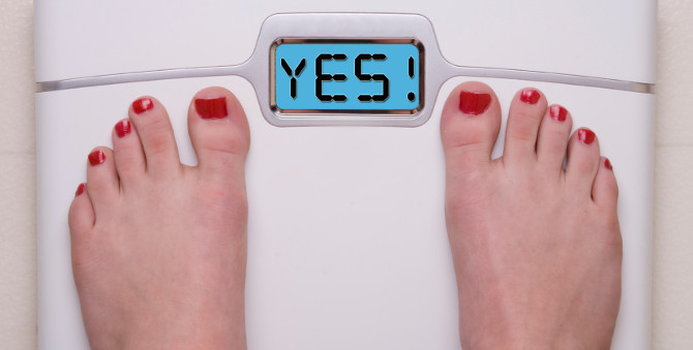Setting realistic weight loss goals and losing weight in a safe and effective manner will help you maintain your weight loss long term. With so many new diets being advertised it's hard to know how to set a realistic weight loss goal that you'll be able to achieve and maintain. Below are some guidelines to help you determine if your weight loss goal is realistic and feasible.
Choose Your Lowest Adult Weight
If your goal weight is lower than your lowest adult weight (since age 21), it may not be realistic. Although it is possible to drop below your lowest adult weight so far, don't get discouraged if it doesn't happen. As we age our metabolism slows down making it more difficult to lose weight. Your lowest adult weight may be a realistic goal for you but the length of time it will take to reach that goal may vary.
Don't Exceed a 10 Percent Loss Initially
Your initial weight loss goal shouldn't exceed 10 percent of your starting body weight. For example, if you currently weigh 200 pounds, your initial weight loss goal shouldn't exceed 20 pounds. If you achieve your initial goal try to maintain it for at least 6 months before attempting your next weight loss. Losing weight in this manner typically leads to long-term weight loss, especially when physical activity is incorporated into your daily routine.
Choose an Appropriate Time Frame
To lose weight in a safe and effective manner your rate of weight loss should be approximately ½ - 1 lb. per week, until you've reached your initial weight loss goal. To achieve this pace of weight loss, reduce your calorie intake by (or burn an extra) 250 - 500 calories per day.
Use the Hamwi Method
The Hamwi method is a popular way to calculate your ideal body weight range. For women, start with 100 lb. for the first 5 feet of height; add 5 pounds for every inch over 5 feet. Adjustments are made for large and small frames (add or subtract 10 percent). For example, a woman who is 5-foot-4 would add 20 lb. (4 inches X 5 Ib.) to 100 lb., giving her an ideal body weight range of 108 - 132 lb. (120 lb. plus or minus 10 percent). For men, start with 106 lb. for the first 5 feet of height and add 6 lb. for every inch over 5 feet (plus or minus 10 percent).
Calculate Your BMI
Calculating your BMI (Body Mass Index) will help you determine if your weight loss goal is reasonable. BMIs of 18.5-24.9 are considered normal weight, 25.0-29.9 is considered overweight, and 30 and above is obese. Use this formula to calculate your BMI: [weight (in pounds)/height (in inches) 2] x 703. For example, a person who is 5-foot-5 and weighs 200 pounds would have a BMI of 33 using the formula above (200/65/65) X (703). Your goal weight should ideally put you in the normal weight BMI range.



